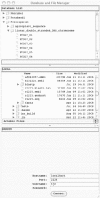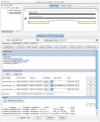Artemis and ACT: viewing, annotating and comparing sequences stored in a relational database
- PMID: 18845581
- PMCID: PMC2606163
- DOI: 10.1093/bioinformatics/btn529
Artemis and ACT: viewing, annotating and comparing sequences stored in a relational database
Abstract
Motivation: Artemis and Artemis Comparison Tool (ACT) have become mainstream tools for viewing and annotating sequence data, particularly for microbial genomes. Since its first release, Artemis has been continuously developed and supported with additional functionality for editing and analysing sequences based on feedback from an active user community of laboratory biologists and professional annotators. Nevertheless, its utility has been somewhat restricted by its limitation to reading and writing from flat files. Therefore, a new version of Artemis has been developed, which reads from and writes to a relational database schema, and allows users to annotate more complex, often large and fragmented, genome sequences.
Results: Artemis and ACT have now been extended to read and write directly to the Generic Model Organism Database (GMOD, http://www.gmod.org) Chado relational database schema. In addition, a Gene Builder tool has been developed to provide structured forms and tables to edit coordinates of gene models and edit functional annotation, based on standard ontologies, controlled vocabularies and free text.
Availability: Artemis and ACT are freely available (under a GPL licence) for download (for MacOSX, UNIX and Windows) at the Wellcome Trust Sanger Institute web sites: http://www.sanger.ac.uk/Software/Artemis/ http://www.sanger.ac.uk/Software/ACT/
Figures







References
-
- Bendtsen JD, et al. Improved prediction of signal peptides: SignalP 3.0. J. Mol. Biol. 2004;340:783–795. - PubMed
-
- Berriman M, Rutherford K. Viewing and annotating sequence data with Artemis. Brief. Bioinform. 2003;4:124–132. - PubMed
-
- Carver TJ, et al. ACT: the Artemis Comparison Tool. Bioinformatics. 2005;21:3422–3423. - PubMed
Publication types
MeSH terms
Grants and funding
LinkOut - more resources
Full Text Sources
Other Literature Sources

